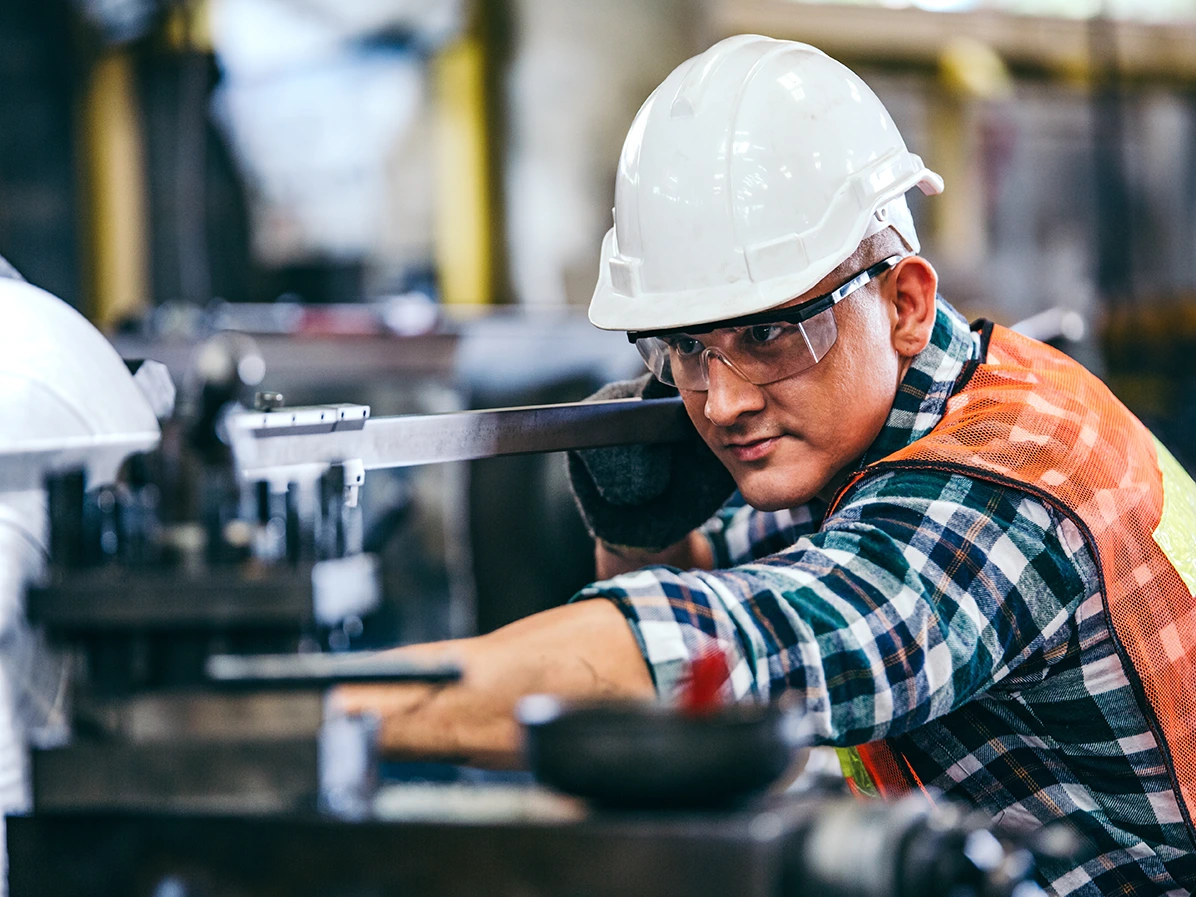Contents
How To Ensure Good Health And Safety Practices In Manufacturing
1 December 2022
The manufacturing industry is an economic powerhouse in the U.S. It’s responsible for producing 20 percent of the nation’s capital investment, 35 percent of productivity growth, 60 percent of exports— supporting local economies and small suppliers across the country.
It’s a leading light. And since the pandemic, when 578,000 manufacturing jobs were made redundant, it’s seen great recovery. Since January 2021, employment in manufacturing has grown by 668,000 new jobs, and is now above pre-pandemic levels. That progress is critical to the U.S. economy. McKinsey Global Institute estimates that restoring growth and competitiveness in key manufacturing industries could boost U.S. GDP by more than 15 percent, higher than it was before COVID-19.
However, those at the frontline driving all this success, are those at the highest risk of experiencing accidents and deaths. The U.S. Bureau of Labor statistics shows that manufacturing is the third-most dangerous occupation. In 2019, the industry had 395,300 workplace injuries and 35,000 workplace illnesses because of overexertion, repetitive stress, machine-related accidents, chemical exposure and falling objects.
It is a challenging environment to work in and risks are constant. With a growing workforce, can an industry at the forefront of new innovations, one that plays such a significant role in the economic growth of a country, realistically ensure the health and safety of its workers?
Absolutely.
We think it’s possible to run good health and safety practices so that every manufacturing site can become a safe and enjoyable place to work. Here’s how EHS management software can help.
Protecting every person on the factory floor
Creating a health and safe work environment isn’t just about filing away incident reports (although that’s an important part of it). It requires anticipating potentially risky situations before they happen and taking swift action to prevent them from occurring.
EHS management software makes those steps possible. Here’s how:
1. Makes safety scale alongside your business.
As we’ve already mentioned, the manufacturing industry is growing. With more workers to manage, more targets to hit and processes changing quickly, it can be easy for health and safety to slip behind. The right EHS software needs to keep up with these changing demands, it should support the business and not require re-designing to maintain performance levels. As we highlighted in a recent blog – The perfect EHS Software for your business - it should offer functionality that is adaptable and configurable and importantly, based on the needs of an organization, not just a feature’s list.
2. Puts training at people’s fingertips.
Classroom training is hard to recall. That’s why most employees prefer on-the-job training that brings the most relevant, actionable information to them in bite-sized videos. And a solution where training is integrated into your EHS platform takes this concept one step further toward perfection.
For example, let’s suppose there are two new workers in their very first week. Having completed their induction, they may still be reserved about operating heavy machinery. Worker A may go and ask for help elsewhere, potentially disrupting someone else on the production line, or walk back to the main office to read through relevant documentation. There’s a better alternative. Worker B would simply scan a QR code on the equipment they are about to use, look through the instructions on their phone and then get started. Learning in the flow of work makes information immediately actionable, preventing accidents that happen because of a small step being forgotten.
3. Supports an agile approach.
Collecting data is a key part of any successful health and safety program. It helps you narrow in on weak areas and take decisive actions against threats. But for so long, EHS managers have been using spreadsheets to track all this vital information. Now’s the time to move away from those manual processes. Start looking at how you can digitize what you have so you can give management and frontline workers the time to focus on other important tasks. EHS software can provide trend analysis. Using real-time data visualizations and dashboards can help you see hotspots that indicate a problem. You can also proactively decide if the trend is an outlier or something that needs a solution before it is too late. Additionally, summary reports can help you predict where preventative interventions will be most effective.
Embrace digital to make manufacturing significantly safer
The manufacturing industry will never be entirely free of accidents or incidents, but it can be made significantly safer by bringing people and technology together with intuitive tools for humans. There is a wealth of dynamic EHS and well-being solutions now available that have been specifically built to support manufacturers in this rapidly changing world. These help make safety scalable, put it at people’s fingertips and support an agile approach, allowing any organization to ensure good health and safety practices - now and in the future.

RELATED BLOGS

Top 5 Safety Hazards In the Manufacturing Industry
14 June 2024 - Team Evotix
According to the National Safety Council, in 2022, the manufacturing sector reported 110 non-fatal injuries per 10,000 workers, making it the sixth highest ranking industry for such injuries. With an..

5 Ways Safety Software Can Enhance Manufacturing Companies’ Compliance and Safety
19 September 2024 - Team Evotix
Manufacturing environments are inherently risky. With the presence of heavy machinery, hazardous materials and fast-paced workflows, the risk of incidents is ever-present.

The Importance of Safety in the Manufacturing Industry
27 November 2024 - Team Evotix
While industries like construction, fishing or hunting often top the list for serious workplace incidents, manufacturing holds a unique and concerning position. Despite employing a smaller percentage..